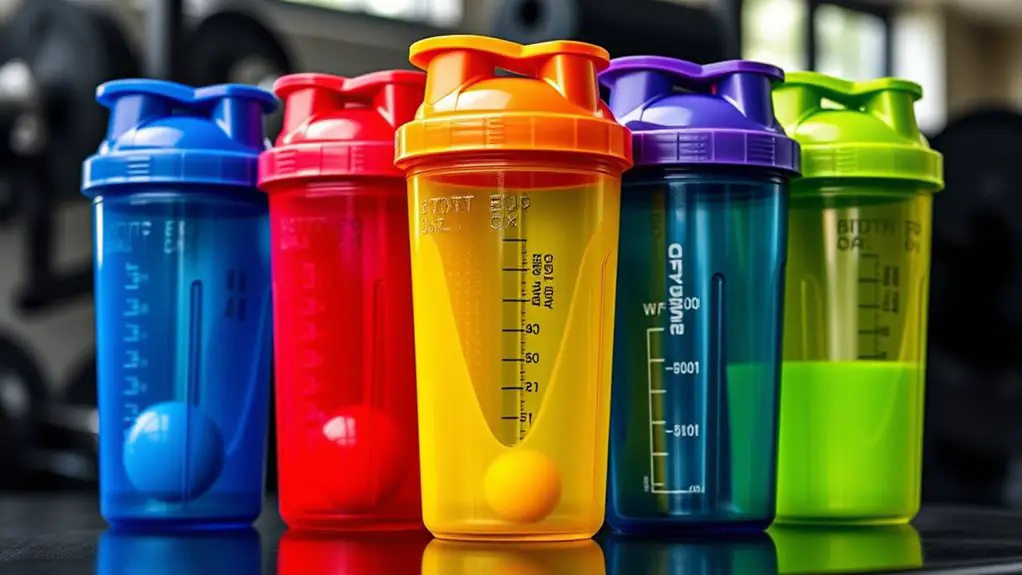Hypoxic training improves your lung capacity by enhancing how your body utilizes oxygen more efficiently. It increases your red blood cell count and strengthens your respiratory muscles, allowing for deeper breaths. This leads to better endurance and quicker recovery times. As you regularly incorporate hypoxic training into your routine, you'll notice significant improvements in your stamina and overall performance. There's plenty more to uncover about the benefits and techniques you could try.
Understanding Hypoxia and Its Effects on the Body
When you think about hypoxia, it's essential to understand how low oxygen levels can impact your body. This condition can lead to fatigue, confusion, and decreased physical performance. You might feel a sense of unrest, as your body struggles to provide the energy you need to pursue your passions and live freely. As oxygen levels drop, your muscles and organs don't get the fuel they require, making every task feel more challenging.
Hypoxia can also trigger your body's natural survival mechanisms, increasing your heart rate and breathing rate in an effort to compensate. This response can leave you feeling drained and limits your ability to fully engage in activities that promote a sense of freedom. Understanding these effects equips you to better navigate environments where oxygen is scarce, empowering you to reclaim your liveliness. Embracing this knowledge can ultimately enhance your journey toward ideal health and performance.
Mechanisms of Lung Capacity Improvement
When you engage in hypoxic training, your body adapts by enhancing its ability to utilize oxygen more effectively. This process not only boosts your overall oxygen efficiency but also strengthens your respiratory muscles. As a result, these changes can greatly improve your lung capacity over time.
Enhanced Oxygen Utilization
Although many athletes focus on strength and endurance, enhanced oxygen utilization is a critical mechanism that can greatly improve lung capacity. By training in hypoxic conditions, you force your body to adapt, making it more efficient at absorbing and using oxygen. This adaptation leads to a greater number of red blood cells and increased capillary density, allowing your muscles to receive more oxygen during intense activities. As your body learns to utilize oxygen more effectively, you'll notice less fatigue and improved stamina, giving you the freedom to push your limits. Ultimately, this enhanced oxygen utilization not only boosts your performance but also contributes to your overall well-being, empowering you to achieve your athletic goals with greater ease and confidence.
Increased Respiratory Muscle Strength
Hypoxic training doesn't just enhance oxygen utilization; it also greatly boosts respiratory muscle strength. When you're exposed to lower oxygen levels, your body adapts by increasing the strength and endurance of your diaphragm and intercostal muscles. This improved strength means you can take deeper breaths, enhancing your lung capacity and overall performance.
Here's a quick look at the benefits:
| Benefit | Description | Impact on Performance |
|---|---|---|
| Increased Diaphragm Strength | Greater ability to expand lungs | Improved oxygen intake |
| Enhanced Endurance | Muscles can work harder for longer periods | Better stamina during activities |
| Improved Breathing Efficiency | More air exchanged with each breath | Enhanced overall physical performance |
Embrace hypoxic training and experience the freedom of stronger respiratory muscles!
Benefits of Hypoxic Training for Athletes
As athletes aim for peak performance, incorporating hypoxic training into their regimen can lead to significant improvements in lung capacity and overall endurance. By training in low-oxygen environments, you'll enhance your body's ability to utilize oxygen more efficiently, which translates to better stamina during competitions. This adaptation not only boosts your endurance but also helps delay fatigue, allowing you to push harder for longer.
Additionally, hypoxic training can improve your recovery time, making it easier to bounce back after intense workouts. You'll notice that your respiratory muscles become stronger, enabling you to breathe more efficiently during exertion. This training method can also sharpen your mental resilience, as working in challenging conditions builds grit and determination.
Ultimately, hypoxic training offers a unique edge, empowering you to break through performance barriers and achieve your athletic goals. Embrace the freedom it brings to elevate your game.
Incorporating Hypoxic Training Into Your Routine
When you're ready to incorporate hypoxic training into your routine, you'll want to contemplate the various types available to you. It's also important to think about how often and how long you'll practice these techniques, while keeping safety precautions in mind. This approach will help you maximize the benefits while minimizing any risks.
Types of Hypoxic Training
Incorporating hypoxic training into your routine can take various forms, each tailored to meet different fitness goals. You've got the freedom to choose the method that resonates with you. Here are four popular types:
- Altitude Training: Simulate high-altitude conditions by exercising in elevated areas or using altitude masks.
- Interval Training: Alternate between hypoxic and normoxic phases during your workouts, boosting endurance and performance.
- Hypoxic Breathing Techniques: Practice specific breathing exercises that limit oxygen intake, enhancing lung capacity and efficiency.
- Hypoxic Equipment: Use specialized gear like hypoxic tents or chambers to create a low-oxygen environment while resting or sleeping.
Explore these options to find what fits best within your lifestyle and goals, and enjoy the journey toward improved lung capacity!
Training Frequency and Duration
Finding the right training frequency and duration is essential for maximizing the benefits of hypoxic training. You'll want to incorporate hypoxic sessions into your routine 2 to 4 times a week, depending on your fitness level and goals. Start with shorter sessions of about 20 to 30 minutes, gradually increasing as your body adapts. Listen to your body; if you're feeling fatigued, it's okay to back off. Mixing hypoxic training with your regular workouts allows for flexibility, letting you explore various activities while boosting your lung capacity. Remember, the key is consistency and variety. Experiment with different durations and intensities to find what feels right for you, and enjoy the freedom that comes with improved endurance and lung function.
Safety Precautions to Consider
Although hypoxic training can remarkably enhance lung capacity, it is crucial to prioritize safety as you integrate it into your routine. Ignoring safety precautions can lead to adverse effects, so keep these in mind:
- Start Slow: Gradually increase intensity and duration to allow your body to adapt.
- Stay Hydrated: Dehydration can exacerbate the effects of hypoxia; drink plenty of water.
- Monitor Your Body: Pay attention to any signs of dizziness or shortness of breath, and stop if necessary.
- Consult a Professional: Speak with a fitness expert or healthcare provider before starting, especially if you have pre-existing conditions.
Safety Considerations and Precautions
When considering hypoxic training, it's essential to prioritize safety to avoid potential risks associated with reduced oxygen levels. Start by evaluating your fitness level; if you've any pre-existing health conditions, consult a healthcare professional before diving in. Gradually introduce hypoxic training into your routine—don't push your limits too quickly.
Always train with a partner or under supervision, especially if you're new to this method. This way, you'll have someone to help if you feel faint or dizzy. It's also wise to monitor your body's responses closely. If you experience persistent headaches, shortness of breath, or extreme fatigue, don't hesitate to stop. Quality sleep is crucial for overall recovery and can enhance your experience with hypoxic training. Stay hydrated and listen to your body; each session should enhance your experience, not overwhelm it. By following these precautions, you can enjoy the benefits of hypoxic training while keeping safety at the forefront.
Real-Life Success Stories and Case Studies
As athletes and fitness enthusiasts increasingly turn to hypoxic training, many have reported remarkable improvements in their lung capacity and overall performance. Here are some inspiring success stories:
- Marathon Runner: After incorporating hypoxic training, one runner improved their time by over 10%, breaking personal records and qualifying for major marathons.
- Triathlete: A triathlete utilized hypoxic sessions to enhance endurance, leading to a podium finish in a national competition.
- Mountain Climber: A climber trained in a hypoxic environment, successfully summiting peaks above 8,000 meters without supplemental oxygen.
- Fitness Coach: A coach adopted hypoxic training for clients, reporting better lung function and energy levels, allowing them to crush their fitness goals.
These stories illustrate that hypoxic training isn't just a trend; it's a powerful tool for revealing your body's potential and achieving that exhilarating sense of freedom in your performance.
Frequently Asked Questions
Can Hypoxic Training Help With Altitude Sickness Prevention?
Yes, hypoxic training can help you prepare for high altitudes, potentially reducing altitude sickness risk. By simulating lower oxygen levels, your body adapts, making it easier for you to acclimate when you reach those heights.
How Long Does It Take to See Lung Capacity Improvements?
Imagine a bird learning to soar higher. You'll notice lung capacity improvements within weeks of consistent training. Embrace the journey, and soon you'll feel the freedom of breath as you conquer new heights.
Is Hypoxic Training Suitable for Non-Athletes?
Absolutely, hypoxic training can benefit non-athletes too. It enhances your breathing efficiency and endurance, making daily activities easier. Just make sure you approach it safely and consider your health before diving in.
What Equipment Is Needed for Hypoxic Training?
For hypoxic training, you'll need a few essentials: a hypoxic training mask, pulse oximeter to monitor oxygen levels, and a stable environment. With these tools, you can effectively challenge your body and enhance endurance.
Are There Any Age Restrictions for Hypoxic Training?
Imagine climbing a mountain, feeling free in the crisp air. There aren't strict age restrictions for hypoxic training, but it's wise to consult a doctor first. Your journey to better fitness should be safe and enjoyable!




